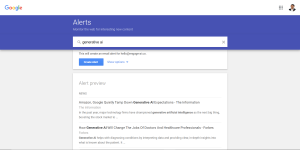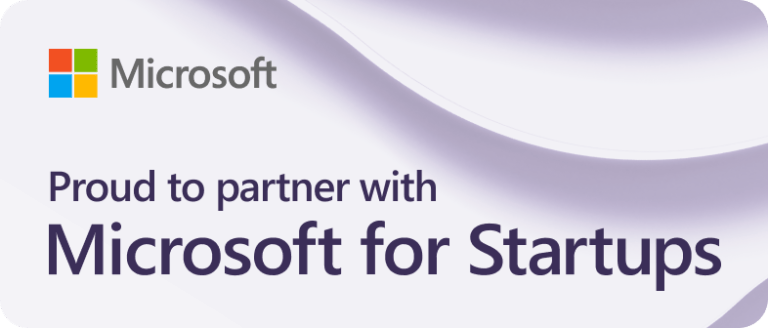LinkedIn connections are crucial to growing your network and business.
Many people struggle with building their connections on LinkedIn, and it’s not uncommon for them to get stuck at around 100 or so.
They feel like they’re making progress but then get stuck and give up.
This guide covers everything you need to know about LinkedIn connections.
Degree of Connections on LinkedIn
There are three types of connections on LinkedIn.
What Does 1st Mean on Linkedin?
A first-degree connection is someone who is already in your network. You sent the person a connection request, and they accepted, or vice versa.
What Does 2nd Mean on Linkedin?
A second-degree connection is someone who is in the network of your first-degree connections.
What Does 3rd Mean on Linkedin?
A third-degree connection is someone who is in the network of your second-degree connections.
Are Connections Important on LinkedIn?
Yes. There are many benefits to being connected with the right people on LinkedIn:
1) You have access to valuable information.
LinkedIn is a platform where professionals create content on top of building their network.
By connecting with other people within your industry or niche, you can find great resources to help grow your business and expand your network.
2) You have access to more quality jobs.
LinkedIn has a full-featured job search function. When you’re linked with the right people, it’s much easier to find opportunities that are relevant to your industry and profession.
Many employers use LinkedIn as their main source for talent recruitment. Therefore, having connections at those companies can expose you directly to new job openings.
3) You have increased leverage.
When you’re linked with the right people, many doors can open for you. This can be in the form of new job opportunities, increased awareness and new collaborations.
Having the right connections can make you more marketable, and therefore increase your value.
Who Do You Connect With on LinkedIn?
Typically, you want to connect with people linked to your industry, profession, or location.
Suppose you’re in the technology field and work for a small business in Nebraska that doesn’t use social media much. In that case, it’s probably not helpful to be linked with thousands of social media marketing managers around the country.
How Do You View Your Connections?
- Click My Network on the top navigation bar of any LinkedIn page.
- Under Manage my network on the left-most column, click Connections.
- You will see a list of your first-degree connections.
How Many Connections Can You Have on LinkedIn?
You can only have 30,000 first-degree connections.
There is no limit to how many followers you can have, however.
What is a Good Number of LinkedIn Connections?
There’s no exact number that is the “correct” amount of connections.
However, you want to be linked with enough people so that your network has a broad reach within your industry and profession.
Typically, this means around 500 first-degree connections.
Is It Bad to Have Too Many Connections on LinkedIn?
Yes. Having a large number of connections isn’t necessarily a good thing.
Having too many connections can make your profile look spammy or fake.
Having a large number of connections can also make it harder to manage your relationships.
It’s better to have a manageable amount of quality connections. This way, you’re able to engage with them regularly and maintain those bonds.
Here are some quick tips for making your LinkedIn connections count:
1) Limit yourself to connecting with people who matter, and only if it’s relevant. Don’t just accept anyone who sends a connection request.
2) Maintain your connections. Don’t let them fall through the cracks; this includes engaging in their posts and sharing them with your network.
How to See Pending Connections on LinkedIn
- Click the My Network icon.
- Click Manage on the Invitations column.
- You will see the pending connection requests you’ve received and sent.
How Do You Know If Someone Rejects Your Connection Request on LinkedIn?
You can’t. LinkedIn does not notify users when that happens.
The person you are trying to connect with can choose to click Ignore rather than accept your request or not interact with the request invite at all.
How to Remove Connections on LinkedIn
You can remove a connection by visiting the person’s profile, clicking the More button and selecting Remove Connection. However, this could potentially alert them that you’ve removed them from your network.
How to Remove a Connection from LinkedIn Without Them Knowing
- Click the My Network icon on the top navigation bar.
- Under Manage my network, click Connections.
- Click on the three dots beside the Message button and select Remove connection.
With this method, they won’t be alerted by LinkedIn about you viewing their profile.
Nevertheless, they can still learn that you’ve removed the connection by looking up your LinkedIn profile. Thus, it’s vital to accept and send connection requests selectively.
How to Connect with People on LinkedIn
There are many ways to connect with people on LinkedIn, but how do you ensure that they will want to accept your connection request?
1) Send them a personalised message.
Reach out to the person you want to connect with by messaging them on LinkedIn.
Include a personal note and a reason for connecting; make sure that the connection would benefit them just as you think you will benefit from it.
Let them know how you found them, or mention a mutual connection you both have.
2) Comment on their post.
Who doesn’t love quality engagement on LinkedIn?
If you see a post from someone linked to your industry or profession, leave a comment that adds even more value to their original post.
Your engagement shows them that you appreciate their content, and they will be more likely to check out your profile. You might receive a connection request instead!
3) Share their content.
If they post something that you know your network will like, share it!
Not only will you be supporting their content, but they might also return the favour and share your post too.
How to Get More Connections on LinkedIn
There are several ways to increase your LinkedIn connections:
Referral Approach
Consider asking for referrals from friends and business contacts. This approach can expand your network exponentially, though it’s crucial to ensure the quality of these connections.
Hustler’s Approach
Market yourself and your business.
Make sure that you have a professional headshot and informative personal profile. Then, create high-quality content on LinkedIn regularly; this is the best way to get more connections fast.
Don’t forget to add 1-3 relevant LinkedIn hashtags to boost the reach of your LinkedIn posts!
Partnership Marketing Platform
How do you get more people, beyond your existing connections, to read your content?
Well, you’ll first need your first-degree connections to engage in your posts. If you struggle to get enough engagement on your posts, consider partnership marketing.
In short, engagement is an important signal to the LinkedIn algorithm that your content should be more discoverable by others. The more likes and insightful comments you have on your LinkedIn post, the better.
Final Thoughts
LinkedIn is an amazing social network, but it’s up to you to make the most of your connections.
Once you’ve linked with people in your field and industry who can benefit from knowing you—and vice versa—you’ll find that job prospects or business prospects will start rolling in.








